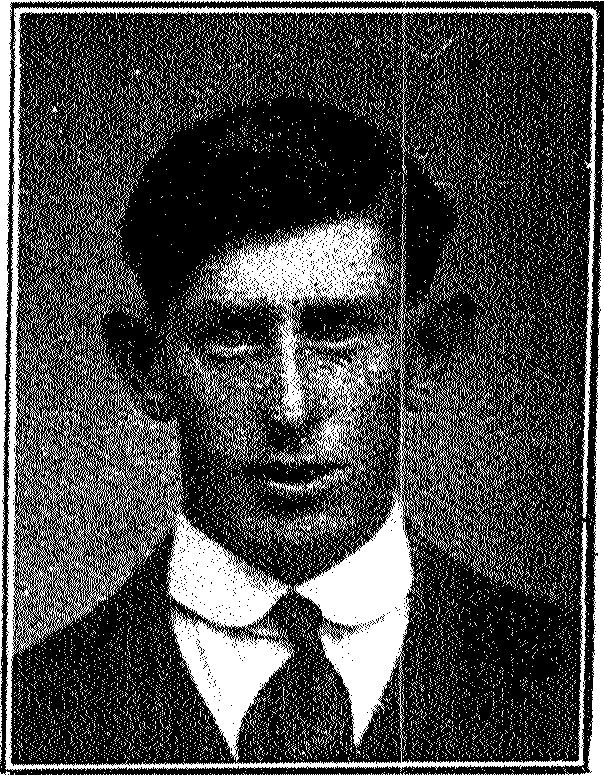Sjt
William Stewart Brien
Informatie over geboorte
|
Geboortedatum: 28/10/1888 |
|
Geboorteplaats: Waimate, Canterbury, Nieuw-Zeeland |
Algemene Informatie
|
Beroep: Timmerman |
Informatie legerdienst
|
Land: Nieuw-Zeeland |
|
Strijdmacht: New Zealand Expeditionary Force |
|
Rang: Serjeant |
|
Service nummer: 6/1785 |
|
Dienstneming datum: 06/01/1915 |
|
Dienstneming plaats: Trentham, Wellington, Nieuw-Zeeland |
|
Eenheden: — Canterbury Regiment, 2nd Bn. (Laatst gekende eenheid) |
Informatie over overlijden
|
Datum van overlijden: 13/12/1917 |
|
Plaats van overlijden: Reutel, Beselare, België |
|
Doodsoorzaak: Killed in action (K.I.A.) |
|
Leeftijd: 29 |
Begraafplaats
|
Polygon Wood Cemetery Plot: / Rij: D Graf: 14 |
Onderscheidingen en medailles 4
|
1914-15 Star Medaille |
|
British War Medal Medaille |
|
Military Medal Medaille — 13/03/1918 |
|
Victory Medal Medaille |
Points of interest 3
| #1 | Geboorteplaats | ||
| #2 | Dienstneming plaats | ||
| #3 | Plaats van overlijden (bij benadering) |
Mijn verhaal
Serjeant Stewart William Brien served in the Canterbury Regiment 2nd Battalion, part of the 2nd New Zealand Brigade, of the New Zealand Division. He was the son of Jessie Brien, of Waimate, Timaru, New Zealand, and the late Robert Brien.
Stewart also served at Gallipoli before he went to the Western Front. The New Zealand Division was in the Polygon Wood area, after the end of the Third Battle of Ypres. Much of the time was spent in wiring, repairing crumbling trenches and improving defences. The landscape was covered with waterlogged shell holes. The right of the New Zealand position was enfiladed from Polderhoek and a decision was made to capture the spur on which the ruins of Polderhoek Chateau and German pillboxes sat. Serjeant Brien was awarded the Military Medal for conspicuous gallantry and devotion to duty. During the operations opposite Polderhoek 27th November to 1st December 1917 he was in command of the Battalion Carrying Party bringing rations up to the troops in the Front line. The Germans shelled the track at dusk and dawn with H.E shrapnel, and also with Machine Guns, but Brien personally led his party through the barrage, where a less resolute leader would not have succeeded. He never once failed to bring up hot rations to the men in the trenches, and in these duties showed marked powers of command, initiative and readiness to assume responsibility. He showed the greatest devotion to duty, an utter disregard for danger, and his services were of the greatest value to his Battalion.'
After the unsuccessful attack on Polderhoek on 3 December 1917, the various battalions took turns in the line and in reserve. Neither the New Zealand Division history or that of the Canterbury Regiment give detailed information for the December 1917-February 1918 period so it is impossible to say with any certainty how Stewart died. The opposing German forces generally held higher ground and movement in the New Zealand lines was often observed and shelled or machine-gunned.
The 2nd Canterbury Battalion is however mentioned in the history of the Otago Regiment. His battalion, which was in support, was heavily shelled on 12-13th December and it is possible this caused his death on 13 December 1917, aged 29. He was buried in Polygon Wood Cemetery, Row D, Grave 14.
Stewart also served at Gallipoli before he went to the Western Front. The New Zealand Division was in the Polygon Wood area, after the end of the Third Battle of Ypres. Much of the time was spent in wiring, repairing crumbling trenches and improving defences. The landscape was covered with waterlogged shell holes. The right of the New Zealand position was enfiladed from Polderhoek and a decision was made to capture the spur on which the ruins of Polderhoek Chateau and German pillboxes sat. Serjeant Brien was awarded the Military Medal for conspicuous gallantry and devotion to duty. During the operations opposite Polderhoek 27th November to 1st December 1917 he was in command of the Battalion Carrying Party bringing rations up to the troops in the Front line. The Germans shelled the track at dusk and dawn with H.E shrapnel, and also with Machine Guns, but Brien personally led his party through the barrage, where a less resolute leader would not have succeeded. He never once failed to bring up hot rations to the men in the trenches, and in these duties showed marked powers of command, initiative and readiness to assume responsibility. He showed the greatest devotion to duty, an utter disregard for danger, and his services were of the greatest value to his Battalion.'
After the unsuccessful attack on Polderhoek on 3 December 1917, the various battalions took turns in the line and in reserve. Neither the New Zealand Division history or that of the Canterbury Regiment give detailed information for the December 1917-February 1918 period so it is impossible to say with any certainty how Stewart died. The opposing German forces generally held higher ground and movement in the New Zealand lines was often observed and shelled or machine-gunned.
The 2nd Canterbury Battalion is however mentioned in the history of the Otago Regiment. His battalion, which was in support, was heavily shelled on 12-13th December and it is possible this caused his death on 13 December 1917, aged 29. He was buried in Polygon Wood Cemetery, Row D, Grave 14.
Bronnen 1
|
Byrne, A.E., Official History of the Otago Regiment, N.Z.E.F. in the Great War 1914-1918, (Dunedin, Wilkie & Co, Ltd, s.d.), p. 238-241. Gebruikte bronnen |
Meer informatie 6
|
Commonwealth War Graves Commission Database https://www.cwgc.org/find-records/find-war-dead/casualty-details/480006 |
|
Namenlijst (In Flanders Fields Museum) https://namenlijst.org/publicsearch/#/person/_id=1779bcec-4a10-4411-b7f8-27589978ff70 |
|
Lives of the First World War (Imperial War Museum) https://livesofthefirstworldwar.iwm.org.uk/lifestory/7171492 |
|
Online Cenotaph (Auckland Museum) https://www.aucklandmuseum.com/war-memorial/online-cenotaph/record/c1614 |
|
The NZEF Project (UNSW Canberra) https://nzef.adfa.edu.au/showPerson?pid=27999 |
|
The NZEF Project (UNSW Canberra) https://nzef.adfa.edu.au/showPerson?pid=28000 |
